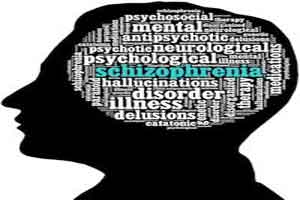- Home
- Medical news & Guidelines
- Anesthesiology
- Cardiology and CTVS
- Critical Care
- Dentistry
- Dermatology
- Diabetes and Endocrinology
- ENT
- Gastroenterology
- Medicine
- Nephrology
- Neurology
- Obstretics-Gynaecology
- Oncology
- Ophthalmology
- Orthopaedics
- Pediatrics-Neonatology
- Psychiatry
- Pulmonology
- Radiology
- Surgery
- Urology
- Laboratory Medicine
- Diet
- Nursing
- Paramedical
- Physiotherapy
- Health news
- Fact Check
- Bone Health Fact Check
- Brain Health Fact Check
- Cancer Related Fact Check
- Child Care Fact Check
- Dental and oral health fact check
- Diabetes and metabolic health fact check
- Diet and Nutrition Fact Check
- Eye and ENT Care Fact Check
- Fitness fact check
- Gut health fact check
- Heart health fact check
- Kidney health fact check
- Medical education fact check
- Men's health fact check
- Respiratory fact check
- Skin and hair care fact check
- Vaccine and Immunization fact check
- Women's health fact check
- AYUSH
- State News
- Andaman and Nicobar Islands
- Andhra Pradesh
- Arunachal Pradesh
- Assam
- Bihar
- Chandigarh
- Chattisgarh
- Dadra and Nagar Haveli
- Daman and Diu
- Delhi
- Goa
- Gujarat
- Haryana
- Himachal Pradesh
- Jammu & Kashmir
- Jharkhand
- Karnataka
- Kerala
- Ladakh
- Lakshadweep
- Madhya Pradesh
- Maharashtra
- Manipur
- Meghalaya
- Mizoram
- Nagaland
- Odisha
- Puducherry
- Punjab
- Rajasthan
- Sikkim
- Tamil Nadu
- Telangana
- Tripura
- Uttar Pradesh
- Uttrakhand
- West Bengal
- Medical Education
- Industry
Schizophrenia symptoms may vary as per brain features

In a major step forward in the diagnosis and treatment of schizophrenia, researchers have discovered that its symptoms are linked to the brain's anatomical characteristics.
"The current study provides further evidence that schizophrenia is a heterogeneous group of disorders, as opposed to a single illness, as was previously thought to be case," said one of the researchers Igor Zwir from University of Granada in Spain.
In order to carry out the study, the researchers employed a magnetic resonance imaging (MRI) technique called "diffusion tensor imaging" on 36 healthy participants and 47 schizophrenic participants.
The tests conducted on the schizophrenic participants revealed that they had various abnormalities in certain parts of their corpus callosum, a bundle of neural fibres that connects the right and left cerebral hemispheres and is considered essential for effective inter-hemispheric communication.
When the researchers detected anomalies in the brain's entire corpus callosum, they discovered that certain characteristic features revealed in the brain scans coincided with specific schizophrenic symptoms.
"The current study provides further evidence that schizophrenia is a heterogeneous group of disorders, as opposed to a single illness, as was previously thought to be case," said one of the researchers Igor Zwir from University of Granada in Spain.
In order to carry out the study, the researchers employed a magnetic resonance imaging (MRI) technique called "diffusion tensor imaging" on 36 healthy participants and 47 schizophrenic participants.
The tests conducted on the schizophrenic participants revealed that they had various abnormalities in certain parts of their corpus callosum, a bundle of neural fibres that connects the right and left cerebral hemispheres and is considered essential for effective inter-hemispheric communication.
When the researchers detected anomalies in the brain's entire corpus callosum, they discovered that certain characteristic features revealed in the brain scans coincided with specific schizophrenic symptoms.
Next Story


